The Hidden Dangers of Mold in Your House That Can Affect Your Health – San Diego CA
Is your home making you sick? The answer may lie in an unsuspecting culprit – mold. While mold can often go unnoticed, it poses serious health risks that can adversely affect you and your family. From respiratory problems to skin irritations, the hidden dangers of mold can wreak havoc on your well-being.
Mold is a fungus that thrives in damp and humid environments, making residential spaces an ideal breeding ground. It often manifests in areas with poor ventilation, such as basements, bathrooms, and kitchens. Small patches of mold can quickly multiply and infiltrate larger areas of your home if not addressed promptly.
Breathing in mold spores can trigger allergic reactions, exacerbate asthma symptoms, and even lead to more serious respiratory conditions. In addition, prolonged mold exposure can cause skin rashes, eye irritations, and persistent coughing. The impacts of mold on your health can be especially harmful to infants, the elderly, and individuals with weakened immune systems.
If you suspect mold in your home, it’s important to take action immediately. A professional mold inspection and remediation service can identify and eradicate any hidden mold, restoring a healthy environment for you and your loved ones.
Don’t let mold go undetected – protect your health and ensure your home is a haven.
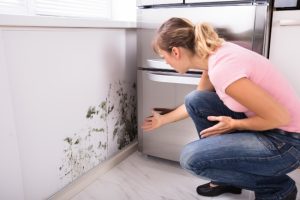
Common Types of Mold Found in Homes:
Mold comes in various forms, with some of the most common types found in homes being Cladosporium, Penicillium, Aspergillus, and Stachybotrys. Each type presents its own set of health risks, and their presence can often be indicative of underlying moisture issues within the home. Identifying the specific type of mold is crucial in determining the appropriate remediation methods to ensure a clean and healthy living environment.
Mold growth is not always visible to the naked eye, as it can thrive within walls, ceilings, or under flooring. Stachybotrys, commonly known as black mold, is particularly notorious for its toxic properties and should be handled with utmost caution. Understanding the characteristics of different mold types can aid in early detection and prompt action to mitigate potential health hazards.
It is essential to be vigilant for any signs of mold growth in your home, such as musty odors, water stains, or visible patches of discoloration on surfaces. Regular inspections and proactive measures can help prevent mold infestations from taking hold and safeguard the health of your household.
Signs and Symptoms of Mold Exposure:
The insidious nature of mold lies in its ability to go unnoticed until its detrimental effects manifest in the form of various health symptoms. Exposure to mold spores can trigger allergic reactions in sensitive individuals, leading to symptoms such as sneezing, coughing, nasal congestion, and skin rashes. These reactions may vary in severity depending on the individual’s immune response and the extent of mold exposure.
For individuals with pre-existing respiratory conditions like asthma, mold exposure can exacerbate symptoms and contribute to breathing difficulties. Persistent coughing, wheezing, chest tightness, and shortness of breath are common indicators of mold-related respiratory issues. Identifying these symptoms early on and addressing the root cause of mold growth is crucial in preventing further health complications.
In addition to respiratory effects, mold exposure can also manifest in skin irritations, eye redness, watery eyes, and throat irritation. These symptoms can be particularly bothersome and impact daily comfort and well-being. Recognizing the signs of mold exposure and taking proactive steps to address the underlying mold infestation is paramount in protecting your health.
Understanding the Causes of Mold Growth in Homes:
Mold thrives in environments with high humidity levels and poor ventilation, making residential spaces susceptible to infestations. Leaky pipes, roof leaks, condensation, and damp basements are common culprits that create the ideal conditions for mold to flourish. Addressing underlying moisture issues is key to preventing mold growth and maintaining a healthy indoor environment.
Poor ventilation can trap moisture indoors, creating a breeding ground for mold spores to proliferate and spread. Areas with inadequate airflow, such as bathrooms, kitchens, and basements, are particularly prone to mold growth if proper ventilation systems are not in place. Ensuring adequate ventilation and moisture control can help mitigate the risk of mold infestations and safeguard your home from potential health hazards.
Humidity levels play a critical role in mold growth, with humidity above 60% providing optimal conditions for mold spores to germinate and colonize surfaces. Monitoring and controlling indoor humidity levels through dehumidifiers, air conditioners, and proper ventilation can significantly reduce the risk of mold growth and create a healthier living environment for you and your family.
The Importance of Mold Testing and Inspection:
Mold infestations are not always visible to the naked eye, making professional mold testing and inspection essential in uncovering hidden mold growth within your home. Certified mold inspectors utilize specialized equipment and techniques to detect mold spores in the air and identify areas of moisture intrusion that may be conducive to mold growth.
Mold testing can provide valuable insights into the extent of mold contamination in your home and guide the development of an effective remediation plan. Sampling air quality and surface swabs can help pinpoint the presence of mold spores and determine the most appropriate course of action to address the issue. Early detection through mold testing can prevent widespread mold infestations and protect the health of your household.
Professional mold inspectors are trained to assess the severity of mold infestations, identify the underlying causes of mold growth, and recommend targeted remediation strategies to eliminate the problem at its source. Thorough inspections are crucial in ensuring that all mold-affected areas are properly addressed and that preventive measures are implemented to prevent future outbreaks.
Effective Methods for Mold Removal and Remediation:
Once mold has been identified in your home, prompt remediation is essential to prevent further health risks and structural damage. Professional mold remediation services employ specialized techniques and equipment to safely remove mold colonies and restore a healthy indoor environment. From containment measures to air filtration, remediation experts follow industry best practices to effectively eliminate mold contamination.
The remediation process typically involves removing affected materials, cleaning and disinfecting surfaces, and addressing the root cause of mold growth to prevent recurrence. Mold remediation professionals are equipped to handle hazardous materials and ensure that mold spores are safely contained and removed from your home. Thorough remediation is critical in restoring indoor air quality and safeguarding the health of occupants.
In cases of extensive mold infestations or toxic mold species like black mold, professional remediation is highly recommended to minimize health risks and ensure thorough removal of all mold spores. Certified mold remediation companies adhere to strict safety protocols and regulations to protect both their workers and the occupants of the affected property. Investing in professional remediation services is a proactive step toward creating a mold-free environment.
Preventing Mold Growth in Your Home:
Prevention is key in mitigating the risk of mold growth and maintaining a healthy living environment for you and your family. Implementing simple yet effective strategies can help reduce moisture levels and inhibit mold infestations in your home. Regular maintenance and vigilance are essential in preventing mold from taking hold and causing potential health hazards.
Repairing leaks promptly, improving ventilation, utilizing dehumidifiers, and controlling indoor humidity levels are proactive measures that can significantly reduce the risk of mold growth. Addressing moisture issues in bathrooms, kitchens, and basements can prevent mold from proliferating and spreading to other areas of your home. Consistent upkeep and preventive actions are crucial in creating a mold-resistant environment.
Routine inspections of your home for signs of mold, such as musty odors or water stains, can help detect mold growth early on and facilitate timely remediation. Regular cleaning and maintenance of damp-prone areas can prevent mold spores from taking root and spreading throughout your home. By staying vigilant and proactive, you can effectively safeguard your home against the hidden dangers of mold.
The Role of Proper Ventilation and Humidity Control:
Proper ventilation is essential in promoting air circulation and reducing moisture buildup in your home. Well-ventilated spaces help dissipate excess humidity and prevent condensation, which can create favorable conditions for mold growth. Installing exhaust fans in bathrooms and kitchens, as well as utilizing attic and crawl space vents, can improve airflow and inhibit mold infestations.
Humidity control plays a crucial role in preventing mold growth, with ideal indoor humidity levels ranging between 30% and 50%. Utilizing dehumidifiers in humid areas of your home can help maintain optimal humidity levels and discourage mold spores from flourishing. Monitoring humidity levels and addressing any spikes promptly can effectively mitigate the risk of mold infestations.
In addition to ventilation and humidity control, proper insulation can also aid in preventing moisture buildup and condensation, which are conducive to mold growth. Insulating walls, floors, and pipes can help regulate indoor temperatures and reduce the likelihood of mold-friendly environments. By incorporating these measures, you can create a well-ventilated, moisture-controlled home that is inhospitable to mold.
Seeking Professional Help for Mold-Related Issues:
When faced with a mold infestation, seeking professional assistance is crucial in ensuring thorough remediation and preventing health risks. Certified mold remediation companies have the expertise and resources to handle mold contamination effectively and safely. Their knowledge of industry standards and regulations can guarantee proper remediation procedures and the restoration of a mold-free environment.
Professional mold remediation services not only address existing mold issues but also provide preventive recommendations to mitigate future mold growth. Their comprehensive approach to remediation involves identifying moisture sources, removing mold colonies, and implementing preventive measures to safeguard against recurrence. Investing in professional help can save time, effort, and potential health complications.
In cases where mold-related health symptoms persist or worsen, consulting a healthcare provider is advisable to address any underlying respiratory or skin issues. Medical professionals can offer guidance on managing mold-related symptoms and recommend appropriate treatments to alleviate discomfort. Prioritizing your health and well-being by seeking timely medical advice can ensure a swift recovery from mold-related health effects.
Conclusion: Taking Action to Ensure a Healthy Living Environment:
The hidden dangers of mold can pose significant health risks to you and your family if left unchecked. By understanding the causes of mold growth, recognizing the signs of mold exposure, and taking proactive measures to prevent infestations, you can create a healthy living environment free from mold-related health hazards. Regular inspections, proper ventilation, humidity control, and professional remediation are key components in safeguarding your home against the insidious effects of mold.
Don’t let mold compromise your well-being – take action to address mold issues promptly and create a safe, mold-free environment for your loved ones. By staying informed, vigilant, and proactive, you can protect your health and ensure that your home remains a sanctuary of wellness and comfort. Embrace the importance of mold awareness and prevention to enjoy a healthier, happier living space for years to come.

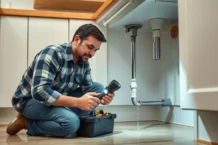
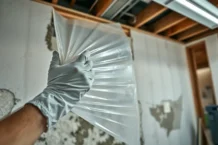
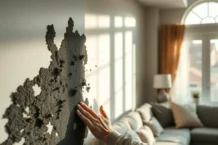
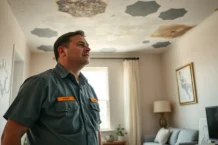
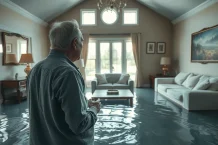



Follow Us!